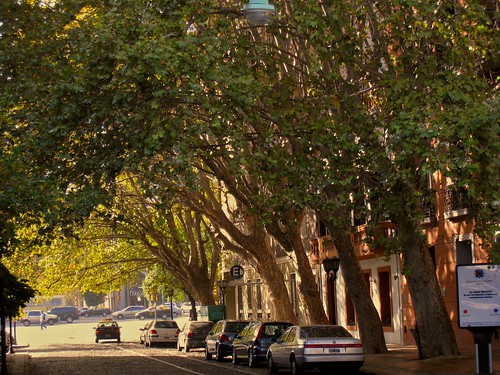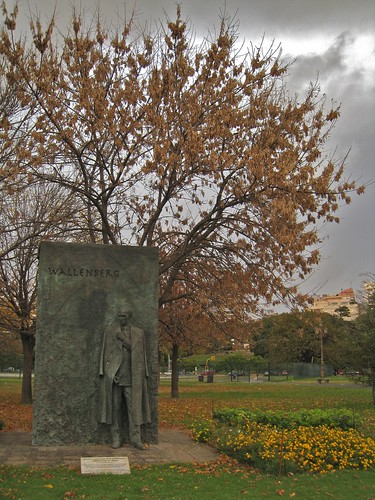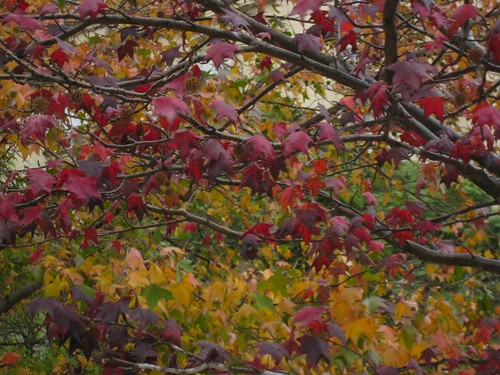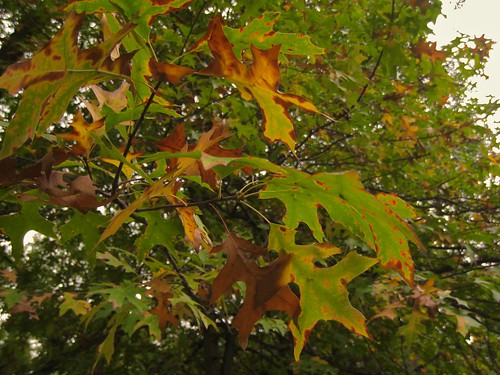Crisp air and the changing colors of the leaves harbor the approach of winter. Fall / Autumn / Otoño is here and porteños are bundled up in jackets, scarves and sometimes gloves. We've added more blankets to our bed and our normally non lap-cats are all about the snuggles these days. The Plane trees and the Ash trees offer the starkest reminder of the seasons. The Plane trees leaves are slowly turning brown and are a mottled mix of faded green and light brown. The palmate leaves flutter down congesting the sidewalks and streets. The pinnately-compound leaves of the Ash trees along Rivadavia are mostly just turning yellow and dropping to the street below. Every once in a while a strong gust of wind will produce a shower of leaves that I have yet to capture on camera. I usually see these showers as I'm riding the bus which lend an eerie feel to the late night trips. The seed pods of the Ash trees remain behind creating a strange heaviness to the otherwise bare branches. These seed pods are like the helicopter seeds of Sycamore Maple trees, but are single "blades" and spiral down much faster as a result.
In Recoleta, I came across some trees I'd never seen before - American Sweetgum - or Liquidambar in









10 comments:
It's great to see the photos you took while we were together. American sweetgum, eh? Mystery solved!
nice to read your post.......as the resident botanist hanging around......i enjoy your tree thoughts. just for your info, Liquidambar styraciflua is its latin name not its castellano name. all plants, like all living things are placed in some category related by certain characteristics and given a bi-nomial name in latin. which should be typed in italics which i cant do on this comment space. i.e. Homo sapiens, or Platanus orientalus, which by the way, crossed accidentally in a park in london in 1861 or so with Platanus occidentalus to make the hybrid london plane trees that are all over paris, london, new york and yes, buenos aires, etc. they have round balls full of seeds that fall apart and let drift out fluff all over in late fall. maples have the two winged seed that helicopters down to the ground.
Katie - it took a while looking in the database, but I finally found em! :D
David - Thanks for the correction! When I looked in the Buenos Aires tree database it said that the nombre común was: Liquidambar and the Wikipedia article in Spanish had the name as the full latin name. I'll correct the post.
I confused the Sycamore Trees I knew growing up in England which have the helicopter seed pods. I didn't know that Sycamore Trees also refer to the Plane Trees I love so much here. I stand corrected!
sorry dont mean to sound like a picky corrector i just happen to have spent my life in horticulture so this stuff is handy to help if i can. just saw this great article in the bbc website on mayan trees which happens to have info mention Ceiba pentandra etc.
http://news.bbc.co.uk/earth/hi/earth_news/newsid_8083000/8083812.stm
id like to send you some pics of Ceiba pentandra but i dont know where to send. it would be a fun article for you to write about this legendary tree from the new world that used to be the stuffing for anything from couches pillows to life preservers. murbach@aol.com
Thanks David - I really do appreciate your corrections, I want to put out correct information and not lead anyone astray with my bad information. I sent you an email - look forward to getting the pics.
That's a great article - I've bookmarked it on delicious for future reference - thank you!
such a good topic! you should write about some of your favorite trees even if they dont occur in buenos aires.
Thanks d7d! I'm planning on writing some more - it's just finding the time these days - life is pretty hectic, which is a good thing, but bad for blogging.
Hi Beatrice.
I am a 45 years old brazilian, who just visited Buenos Aires for the first time last october. I loved the city and ist people, but what I loved the most were the trees. I loved the plane trees of Avenida de Mayo and the ones around Villa Crespo. I loved them so much that I have been searching about them since then in the internet. Wanted to learn the name and more about them. I really suspected they were called platanus, but was not sure, so today I found your blog. It´s a great one. I´ve been living for 25 years in São Paulo, but I come from a town called Tupã, 530 km west of São Paulo City, where trees are so nice to give us shadow during the hot summers. Tupã is full of flamboyant trees (delonix regia) and here in São Paulo, the jequitibá (cariniana estrellensis) is my favourite. I´ll follow your blog.
Hi there Evandro. Thanks for stopping by and I'm so glad that you love the trees here too. Glad that you like this blog and that you will continue to follow it. I have more blog posts in my head and photos on my computer to publish. Need to make more time. Cheers! Beatrice
Post a Comment